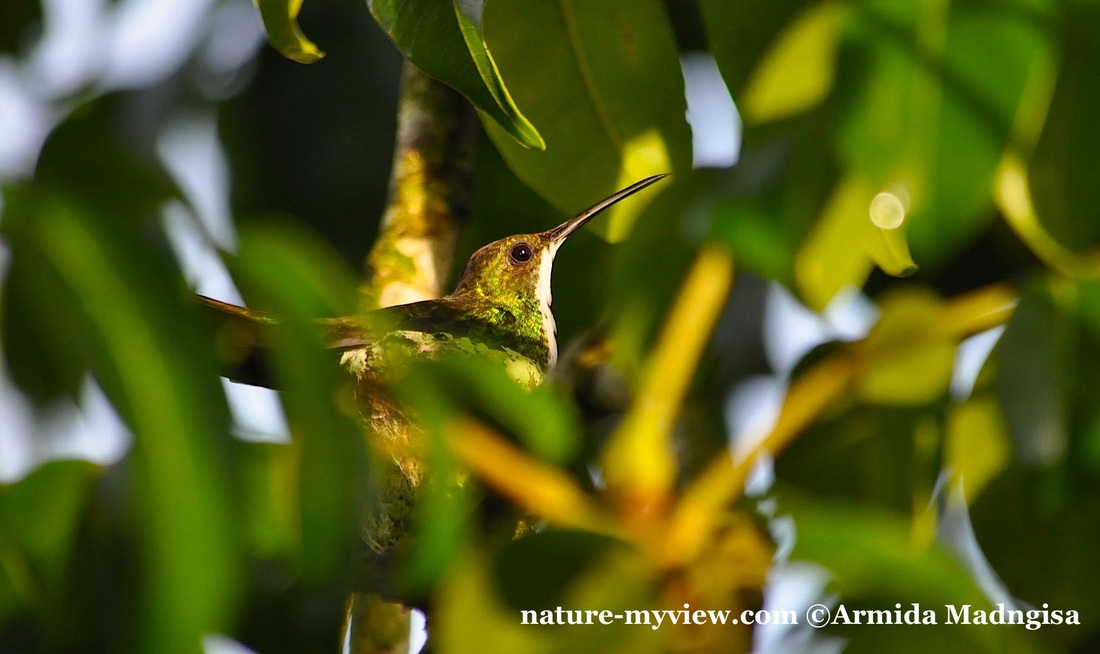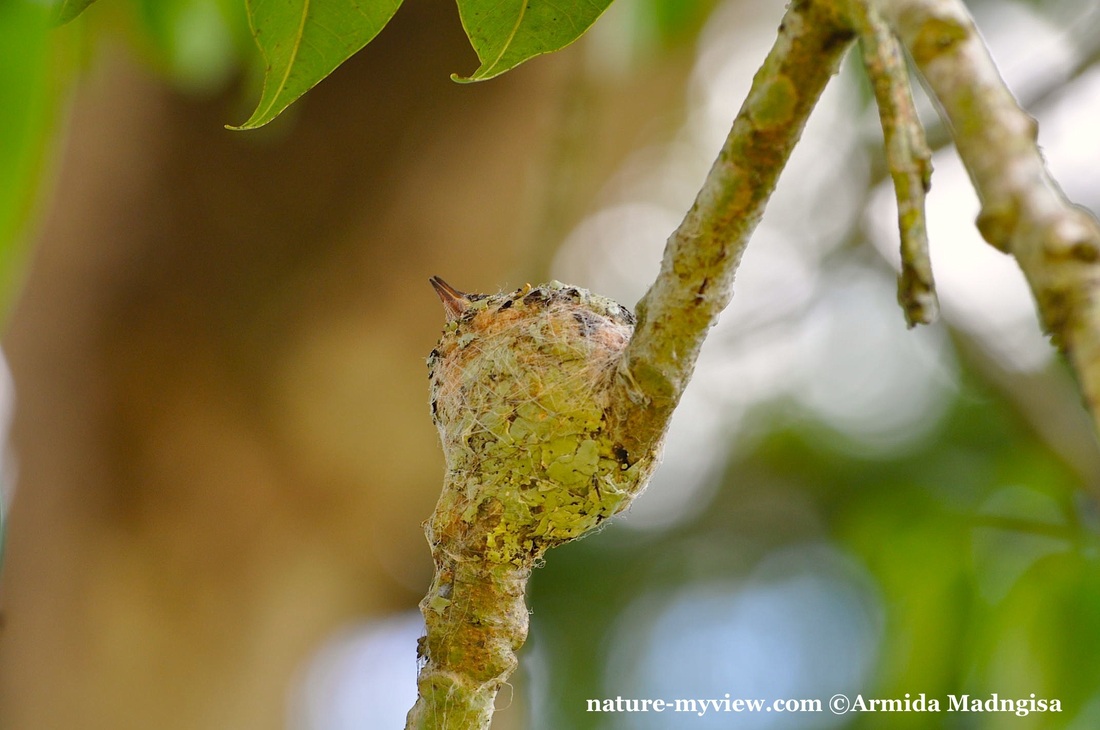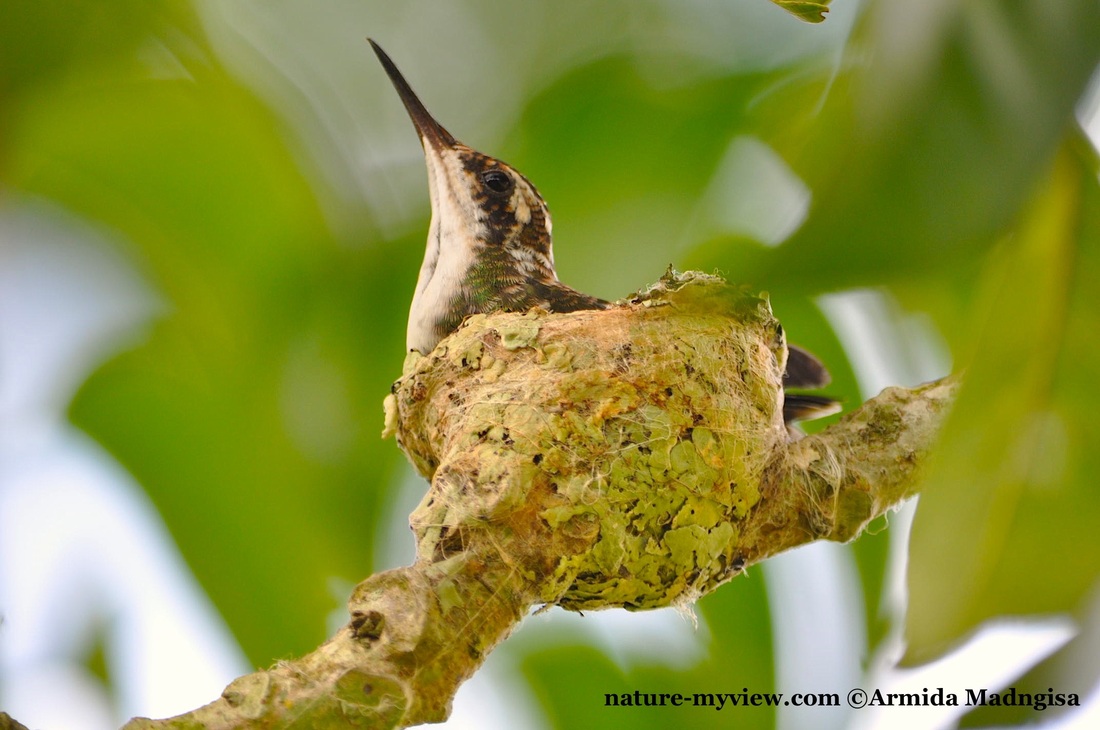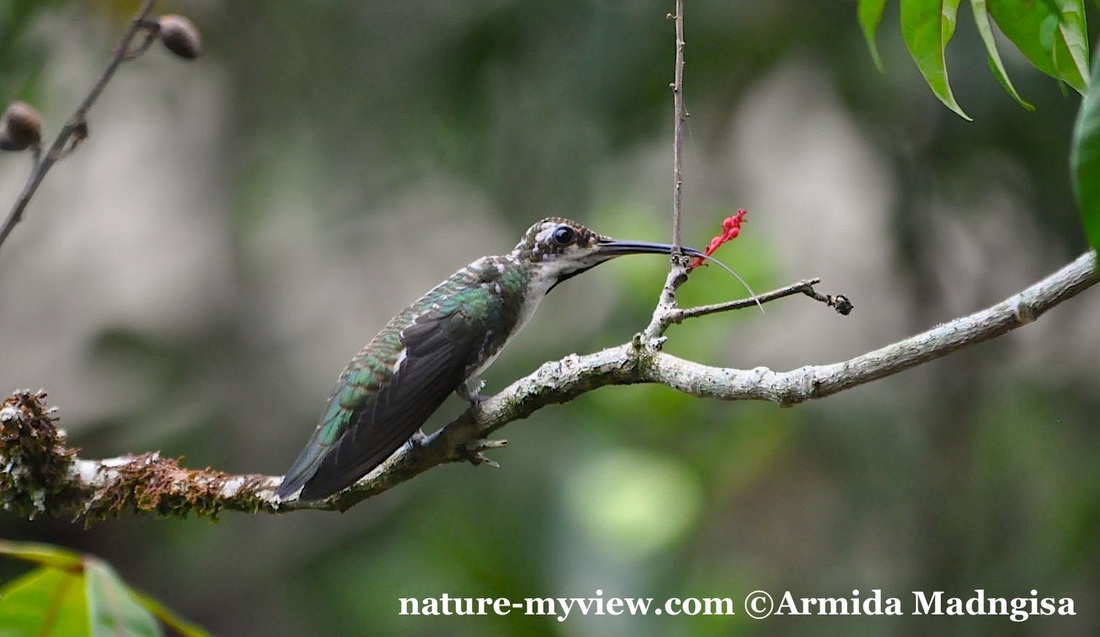|
The Black-throated Mango is one of the dominant and aggressive hummingbirds that I have met in Kabalebo. Meaning that they defend their territory with all their might and are not afraid to chase other birds, bigger than them, away. I have seen many Black-throated Mango's nests near the lodge or area. But they were always built on top of a tree branch, higher than 4 meters. This time I was lucky to observe one nest in particular that was built on a lower level. In this article it is all about the nesting complete with pictures. Enjoy! August 21st, 2014: Just when I was passing by the Mope tree, I heard a familiar sound fading away above my head. Just 2 meters above me I saw this well constructed camouflaged hummingbird's nest. At first I thought it was from the Grey-breasted Sabrewing, but minutes later the Black-throated Mango appeared. Only the females are responsible for the incubating and the whole process afterwards. August 24th, 2014: I admire her perseverance during the whole process. She is staying for at least 80% of her active time in the nest. The remaining time that she is awake, she collects cobwebs and lichens to strengthen her nest or go away for a merely quick break. August 27th, 2014: Even when the sun is at its highest point and the temperature is rising, she is doing her utmost best to stay as long as possible in the nest. Sometimes I see her hiding in the shades but not very far from her nest. It is fascinating to see how she is collecting, on a daily basis, cobwebs and lichens only to strengthen her nest. I also noticed that she likes to have peace and quiet close to her nest. I have seen her many times chasing away noisy tanagers and even a male Black-throated Mango. September 9th, 2014: Just when I was about to give up on her, I see a small 'needle' pointing outside the nest. Finally … the eggs had hatched. Newborns!! September 15th, 2014: The newborns are growing like weed. They are always sitting upright with their head tilted back. When mother arrives to feed them, they patiently await their turns. The female catches flies and insects in midair and then regurgitate the whole substance into her chicks' stomach. It looks like it hurts, but she is feeding them with care and patience. After a couple of weeks they are starting to look like small hummers. The nest is becoming too small for the both of them. September 30th, 2014: The first born flew out of the nest. Not very far of course. The female is now feeding both of them on different locations (nest and outside nest) Here you see the second born still sitting in its nest. It won't be long before it joins its sibling in the 'outside' world. October 2nd, 2014: The second born also flew out of the nest. October 30th, 2014: The female took really good care of her little hummers. Here you can see that they both are trying out the feeder and nectar. They are experiencing and trying out everything. The sibling rivalry even began, they are starting to chase each other away. But since Black-throated Mango's are known as aggressive and dominant hummers it will take a while before one gives in.
This was one of the longest nest observation I did, but worth every bit. Here are other hummingbirds nesting with a happy ending: Comments are closed.
|
Archives
June 2024
Categories
All
|


















 RSS Feed
RSS Feed